Hyundai Kona VS Ford Puma – Specs, Efficiency & Price Comparison
Which model is the better choice – the Hyundai Kona or the Ford Puma? We compare performance (218 HP vs 168 HP), boot capacity (466 L vs 523 L), efficiency (14.60 kWh4.50 L vs 13.10 kWh5.40 L), and of course, the price (23100 £ vs 24800 £).
Find out now which car fits your needs better!
The Hyundai Kona (SUV) is powered by a Petrol, Full Hybrid or Electric engine and comes with a Manuel or Automatic transmission. In comparison, the Ford Puma (SUV) features a Petrol MHEV or Electric engine and a Manuel or Automatic gearbox.
When it comes to boot capacity, the Hyundai Kona offers 466 L, while the Ford Puma provides 523 L – depending on what matters most to you. If you’re looking for more power, you’ll need to decide whether the 218 HP of the Hyundai Kona or the 168 HP of the Ford Puma suits your needs better.
There are also differences in efficiency: 14.60 kWh4.50 L vs 13.10 kWh5.40 L. In terms of price, the Hyundai Kona starts at 23100 £, while the Ford Puma is available from 24800 £.
Compare all the key specs now and find out which model fits your lifestyle best!
In this exciting comparison, the Ford Puma takes on the Hyundai Kona, two standout competitors in the crossover segment. The Puma impresses with its engaging driving dynamics and stylish design, while the Kona offers a more tech-savvy interior and a range of efficient powertrains. Ultimately, both models cater to slightly different preferences, making it a tough choice for buyers seeking versatility and flair in their next vehicle.
Hyundai Kona
The Hyundai Kona blends a bold design with a versatile interior, making it a standout choice in the compact SUV market. Its crisp handling and responsive steering provide an engaging driving experience, whether in the city or on the open road. The vehicle also offers a range of features designed to enhance comfort and connectivity, ensuring a pleasurable journey for both driver and passengers.
details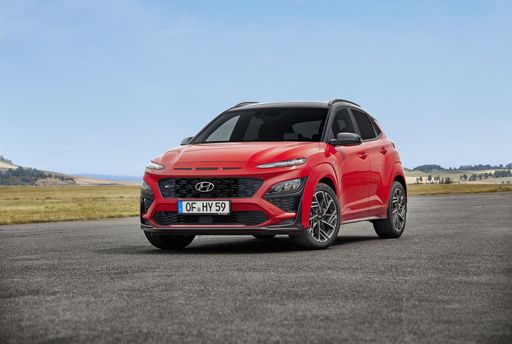 @ hyundai.news
@ hyundai.news
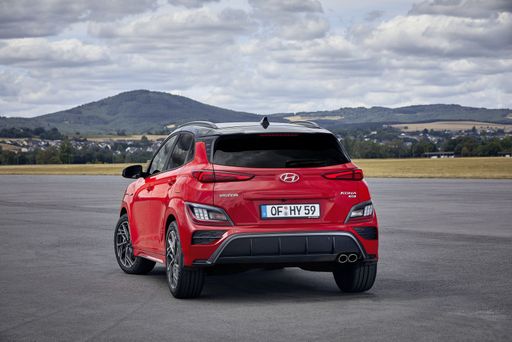 @ hyundai.news
@ hyundai.news
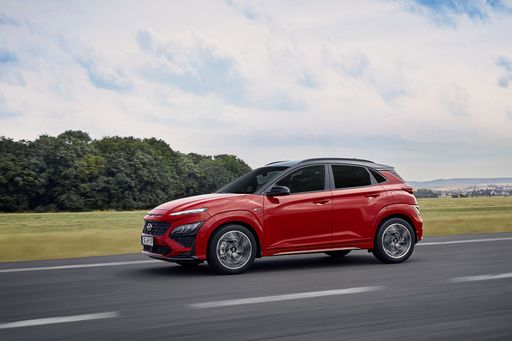 @ hyundai.news
@ hyundai.news
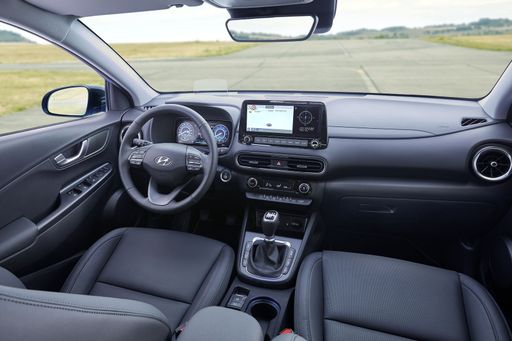 @ hyundai.news
@ hyundai.news
Ford Puma
The Ford Puma presents itself as a stylish compact SUV with a distinctive design that combines practicality with a dynamic driving experience. Its sleek lines and sporty aesthetics make it stand out on the road, while the interior offers a comfortable and tech-savvy environment. With an emphasis on efficiency and a smooth drive, the Ford Puma is well-suited for both urban commutes and countryside adventures.
details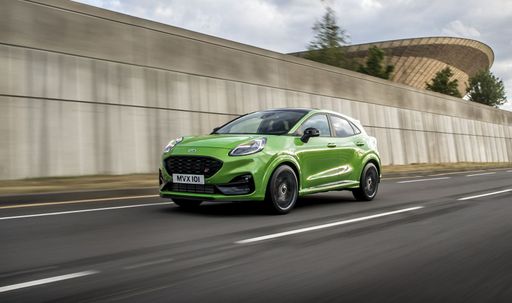 @ puma.fordpresskits.com
@ puma.fordpresskits.com
 @ puma.fordpresskits.com
@ puma.fordpresskits.com
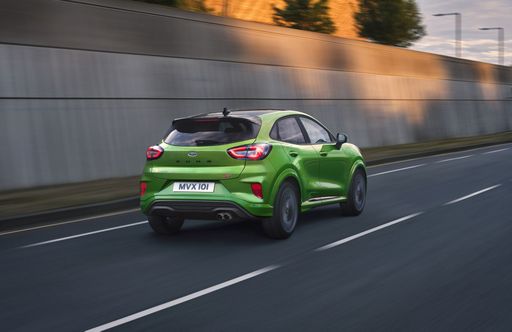 @ puma.fordpresskits.com
@ puma.fordpresskits.com
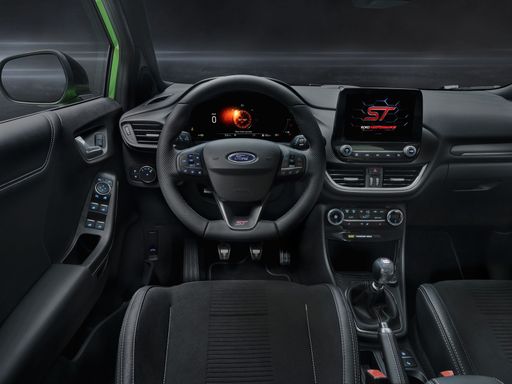 @ puma.fordpresskits.com
@ puma.fordpresskits.com
The compact SUV market has exploded in popularity, and two noteworthy contenders in this space are the Ford Puma and the Hyundai Kona. Both offer modern aesthetics, advanced technology, and a variety of powertrain options, making it crucial for potential buyers to understand their differences. This article aims to provide an in-depth comparison covering technical aspects, innovation, and performance characteristics of these two popular models.
Engine and Performance
The Ford Puma offers a range of engine choices with an emphasis on efficiency. Its petrol line-up includes a mild-hybrid version, providing options such as 125 HP and more powerful variants up to 168 HP. The Puma is also available with an electric powertrain that allows for an electric range of up to 376 km, making it a strong option for environmentally conscious consumers. The 0-100 km/h acceleration times for the Puma range from 7.4 seconds for the quickest variant to 9.8 seconds.
In contrast, the Hyundai Kona features a diverse lineup that includes petrol engines, hybrids, and fully electric variants. The most powerful Kona can deliver up to 218 HP with an impressive 0-100 km/h time of just 7.8 seconds. The Kona electric boasts a remarkable range of up to 514 km, appealing to those who prioritize electric mobility. The combination of the Kona’s all-wheel-drive capability in certain variants also offers enhanced grip and driving security.
Fuel Economy
The Ford Puma scores commendably in fuel efficiency, with consumption figures ranging from 5.4 to 6 L/100 km depending on the variant. The electric version consumes about 13.1 kWh/100 km, making it competitive in its segment.
The Hyundai Kona, however, takes a slightly different approach with its efficiency. Its petrol variants consume between 4.5 and 6.7 L/100 km, while the electric variants see consumption figures as high as 16.8 kWh/100 km. Despite this, the Kona shines with its hybrid options, effectively balancing power and fuel economy.
Interior and Comfort
When it comes to interior space and comfort, both the Ford Puma and Hyundai Kona cater well to families. The Puma features a trunk capacity of 456 to 523 liters, providing ample storage for any adventure. Additionally, the interior design is sleek and equipped with modern technology, enhancing the driving experience.
The Hyundai Kona offers a trunk capacity of 466 liters, presenting a comparable space for cargo. However, the Kona excels with its layout and modern tech features, which include a user-friendly infotainment system and a suite of driver-assistance technologies. Both SUVs comfortably seat five passengers, making them practical choices for urban commuting or weekend getaways.
Safety and Innovations
Safety is a top priority for both manufacturers. The Ford Puma comes equipped with a broad array of features, including pre-collision assist and adaptive cruise control, which contribute to its solid safety credentials.
Similarly, the Hyundai Kona does not fall short in this area, boasting features such as autonomous emergency braking and lane-keeping assist. Both vehicles received respectable ratings from safety organizations, ensuring peace of mind for buyers.
Final Thoughts
Choosing between the Ford Puma and Hyundai Kona ultimately boils down to individual preferences and requirements. The Puma tends to emphasize a sportier drive with its mild-hybrid options, while the Kona presents a more versatile lineup catering to a variety of consumers, particularly those seeking electric and hybrid technologies.
In summary, both the Ford Puma and Hyundai Kona represent the best of what compact SUVs have to offer, combining style, performance, and technology in a way that appeals to a wide range of drivers. Whatever your choice, you can be assured that both models will deliver an engaging driving experience and a host of modern conveniences.

|

|
|
|
|
Costs and Consumption |
|
|---|---|
|
Price
23100 - 41600 £
|
Price
24800 - 36300 £
|
|
Consumption L/100km
4.5 - 6.9 L
|
Consumption L/100km
5.4 - 6 L
|
|
Consumption kWh/100km
14.6 - 16.8 kWh
|
Consumption kWh/100km
13.1 - 13.7 kWh
|
|
Electric Range
377 - 514 km
|
Electric Range
364 - 376 km
|
|
Battery Capacity
1.3 - 65.4 kWh
|
Battery Capacity
43 kWh
|
|
co2
0 - 157 g/km
|
co2
0 - 136 g/km
|
|
Fuel tank capacity
38 - 47 L
|
Fuel tank capacity
42 L
|
Dimensions and Body |
|
|---|---|
|
Body Type
SUV
|
Body Type
SUV
|
|
Seats
5
|
Seats
5
|
|
Doors
5
|
Doors
5
|
|
Curb weight
1370 - 1773 kg
|
Curb weight
1316 - 1563 kg
|
|
Trunk capacity
466 L
|
Trunk capacity
456 - 523 L
|
|
Length
4350 - 4385 mm
|
Length
4186 - 4226 mm
|
|
Width
1825 mm
|
Width
1805 mm
|
|
Height
1580 - 1585 mm
|
Height
1550 - 1555 mm
|
|
Payload
420 - 490 kg
|
Payload
367 - 469 kg
|
Engine and Performance |
|
|---|---|
|
Engine Type
Petrol, Full Hybrid, Electric
|
Engine Type
Petrol MHEV, Electric
|
|
Transmission
Manuel, Automatic
|
Transmission
Manuel, Automatic
|
|
Transmission Detail
Schaltgetriebe, Automat. Schaltgetriebe (Doppelkupplung)
|
Transmission Detail
Schaltgetriebe, Automat. Schaltgetriebe (Doppelkupplung)
|
|
Drive Type
Front-Wheel Drive, All-Wheel Drive
|
Drive Type
Front-Wheel Drive
|
|
Power HP
100 - 218 HP
|
Power HP
125 - 168 HP
|
|
Acceleration 0-100km/h
7.8 - 13.3 s
|
Acceleration 0-100km/h
7.4 - 9.8 s
|
|
Max Speed
162 - 208 km/h
|
Max Speed
160 - 210 km/h
|
|
Torque
200 - 265 Nm
|
Torque
170 - 290 Nm
|
|
Number of Cylinders
3 - 4
|
Number of Cylinders
3
|
|
Power kW
74 - 160 kW
|
Power kW
92 - 124 kW
|
|
Engine capacity
998 - 1598 cm3
|
Engine capacity
999 cm3
|
General |
|
|---|---|
|
Model Year
2024
|
Model Year
2024 - 2025
|
|
CO2 Efficiency Class
D, C, E, F, A
|
CO2 Efficiency Class
D, E, A
|
|
Brand
Hyundai
|
Brand
Ford
|
Hyundai Kona
The Hyundai Kona: A Comprehensive Overview
The Hyundai Kona has established itself as a standout in the compact SUV segment, blending innovation with performance and style. As the automotive world moves towards more sustainable and efficient options, the Kona offers a variety of powertrains, from traditional petrol engines to full hybrids and all-electric models.
Powertrain Options and Performance
The Hyundai Kona's powertrain choices cater to a wide range of preferences. For petrol enthusiasts, the Kona offers a 1.0L T-GDI engine, delivering 100 PS, and a more robust 1.6L T-GDI variant with up to 170 PS. Those looking for efficiency without sacrificing power can consider the full hybrid model, offering 129 PS and an impressive consumption of 4.5 L/100km.
For a greener option, the all-electric Kona provides a compelling case. With battery capacities of up to 65.4 kWh, the electric Kona offers power outputs of 156 to 218 PS, and efficiencies as low as 14.6 kWh/100km, enabling an electric range of up to 513 km.
Technical Specifications and Innovations
Built on a robust platform, the Kona delivers versatility and reliability. With a choice between manual or dual-clutch automatic gearboxes, along with options for front-wheel or all-wheel drive, the Kona ensures a tailored driving experience. The handling is enhanced by the car's lightweight construction, balancing a 1370 to 1773 kg curb weight with dynamic performance.
The Kona's design doesn't compromise cargo space for style; it offers a generous 466 L boot capacity. With a relatively compact body, measuring 4350 to 4385 mm in length, the Kona easily navigates urban environments while still commanding a strong road presence with its 1825 mm width.
Efficiency and Eco-Friendliness
Hyundai is committed to reducing emissions, as evidenced by the Kona's CO2 efficiency ratings, which range from class A for electric models to class D for some higher-performance petrol variants. The focus on reducing environmental impact without sacrificing driving pleasure is notable throughout the Kona range.
Costing and Value
The Hyundai Kona offers commendable value for money. Pricing starts at €26,400 and reaches up to €50,690, depending on the chosen configuration. The monthly running costs range from €956 to €1090, with a cost per kilometre of 38.3 to 43.6 cents, making it a competitive option in its class.
Conclusion: Modern, Efficient, and Versatile
The Hyundai Kona stands as a testament to Hyundai's commitment to innovation, efficiency, and practicality. Whether you are inclined towards a traditional combustion engine, a hybrid for a balance of power and efficiency, or a full electric model for maximum eco-friendliness, the Kona provides a tailored solution for each unique driver preference.
Ford Puma
A Glimpse into the Ford Puma: Fusing Style with Innovation
The Ford Puma stands as a testament to modern engineering fused with style. This compact SUV is not just about aesthetics but brings to the table an array of technical innovations, topped with the reliability and performance Ford is known for. Let's delve into the technical specifics and innovative features that make the Ford Puma a stellar choice for any car enthusiast.
Powertrains and Performance
The Ford Puma is offered with a range of powertrains designed to deliver optimal performance whilst minimising fuel consumption. At the heart of this compact SUV is the 1.0 EcoBoost Hybrid engine, available in both 125 PS and 155 PS variants. This engine is a marvel of engineering, optimised to deliver power efficiently with a remarkable fuel consumption ranging from 5.4 to 5.7 L/100km for manual versions, and slightly higher for the automated variants.
The top-end 1.5 EcoBoost ST variant takes performance up a notch, providing a robust 200 PS that propels the Puma from 0 to 100 km/h in just 6.7 seconds. This variant is perfect for those who prioritise performance and exhilaration in their driving experience.
Mild-Hybrid Technology
The Puma's mild-hybrid technology plays a significant role in enhancing fuel efficiency and reducing emissions. By utilising a belt-driven integrated starter/generator, the Puma recovers energy usually lost during braking, storing it in a 48-volt lithium-ion battery. This stored energy is then used to assist the engine, providing a boost during acceleration and smoothing out the stop-start technology, ultimately leading to enhanced fuel efficiency.
Design and Comfort
The Ford Puma does not compromise on style and comfort with its ergonomic and stylish design. The SUV is available in multiple trims including the ST-Line, Titanium, and the luxurious Vignale editions, each offering unique aesthetic and technological enhancements. These trim levels provide varied offerings in terms of both exterior styling and interior comfort, ensuring there's a Puma that meets every personal preference.
Inside, the Puma offers a driver-focused cockpit with advanced technological integrations such as the SYNC 3 infotainment system, providing seamless connectivity and intuitive control of the vehicle's numerous technological features.
Safety and Technology
Safety remains paramount, and the Ford Puma is equipped with the latest security and technology features. It boasts the Ford Co-Pilot360 suite which includes adaptive cruise control, pre-collision assist with autonomous emergency braking, and lane-keeping assist, enabling a safer driving experience on both city roads and highways.
Versatility and Practicality
Beyond performance and safety, the Ford Puma shines in its versatility. With a boot capacity of 456 litres, it offers ample space for all sorts of adventures, whether you're heading on a family trip or loading sports equipment. Its innovative MegaBox is an extra storage solution, providing additional space below the boot floor.
The Puma's agile handling, paired with its compact dimensions—spanning a length of 4186 to 4266 mm and a width of 1805 mm—makes it an ideal choice for urban commuting and beyond.
Conclusion
In conclusion, the Ford Puma beautifully blends practical features with cutting-edge technology, offering a package that appeals to both the tech-savvy driver and those seeking comfort and reliability. Its range of innovative features, powerful yet efficient engine options, and a design that is both functional and stylish make it a frontrunner in the compact SUV market.
Whether you're drawn by the efficient mild-hybrid engines or the robust performance of the ST variant, the Ford Puma represents a modern driving experience where innovation meets everyday usability.
The prices and data displayed are estimates based on German list prices and may vary by country. This information is not legally binding.
